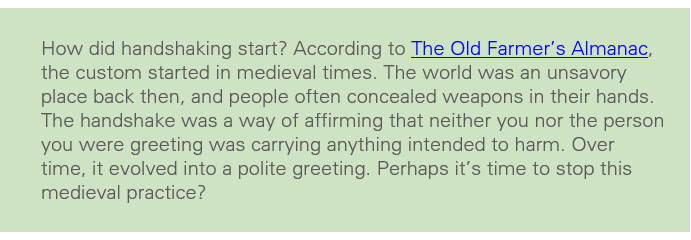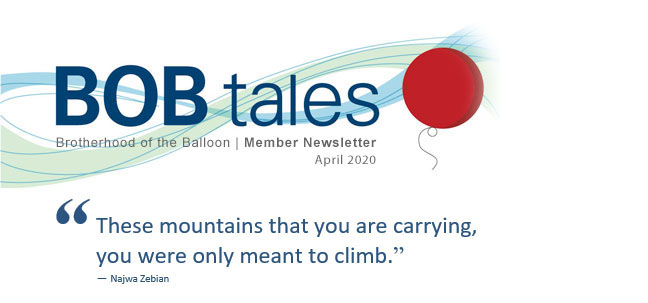
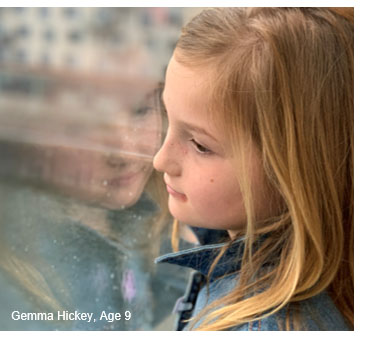 Dear Members (a note from Deb Hickey):
Dear Members (a note from Deb Hickey):
I often imagine what it must be like to be her.
I reluctantly head to school each day knowing I’ll struggle in every class. I sink down in my seat whenever the teacher calls on students to answer a question or come up to the board. I hope nobody sees the “Learning to Read” Dr. Seuss book I’m hiding in my sweatshirt. The other kids read Harry Potter. The teacher hands me a “cheat sheet” when we’re multiplying numbers. The other kids don’t need a cheat sheet.
It hurts when I imagine being her.
Even during the “fun periods” – lunch and recess – I can’t hide from the comments and taunts from my classmates. “You’re stupid,” they say. “You can’t even tie your own shoes!” They say as they laugh and point at my pink, Velcro Nike running sneakers.
Maybe I am what they say I am.
I have a lump in my throat. I carry it throughout the day. The minute I get off the bus in the afternoon and see my mom, I know I’m in my safe place and I let it all go.
My daughter, Gemma, is in the third grade and she has dyslexia and ADHD. Because of her diagnoses, I spend much of my free time researching and learning about her differences. We’ve gotten her on an IEP (Individualized Educational Program) at school; we’ve hired an educational advocate as well as a tutor. Gemma also sees a therapist to ensure the anxiety and feelings of inadequacy don’t overwhelm her. We’re considering private school next year, which is scary for many reasons.
My daughter is everything, so I’ll do anything and stop at nothing to provide for her needs. And I never want her to think she is what they say she is.
Last month, we were flooded with messages from members who were touched by the family photo I included in my opening memo. Several told us they felt they could relate to us more by seeing our faces. So, this month, I decided to not only include another photo, but also to share with you something personal about the one who is closest to my heart, my daughter. We adopted her at birth nine years ago after we learned we couldn’t have children naturally. I feel she was the missing piece in our family, and I couldn’t dream of a life without her.
Thank you for all the wonderful feedback we received last month.
In this issue of BOB Tales, we cover the most talked-about topic in the world right now – coronavirus. It’s all over the news and people are panicking. We’ve included advice from one of the first molecular virologists in the world to work on coronaviruses as our top news story – and we agree with his tips on preventing the spread of this respiratory illness.
When hysteria is rife, it may be helpful to remember similar situations in our past. In 1997, we were told that bird flu could kill millions worldwide. In 1999, we were warned that mad cow disease could kill 500,000 people. In 2003, some reported that SARS would be worse than AIDS, potentially killing tens of millions of people. In 2006, many were preparing for a pandemic of the bird flu. In 2009, we were told that 65,000 could die from the swine flu. All these scares failed to meet the anticipated crisis level. I hope the coronavirus will as well.
This month we cover new research on cholesterol-fighting drugs and their potential benefit to those with high-risk prostate cancer; Vice President Pence’s recent visit to a U.S. proton center; a study that found about 20 percent of five common cancers are the result of “overdiagnosis,” a study questioning the cost effectiveness of proton therapy with and without the use of SpaceOAR hydrogel; a study linking dairy milk to breast cancer; an update on the second edition of Bob Marckini’s book, and much more.
As always, we hope you enjoy this month’s BOB Tales and, as always, we welcome and anticipate your valuable feedback.
Deb Hickey
To print the BOB Tales newsletter or view the newsletter with a larger font size, click here for the PDF file.
In this Issue:
- The Coronavirus in Perspective
- Noted Pathologist’s Advice on Coronavirus Prevention
- Cholesterol Drugs Can Help Fight Prostate Cancer
- VP Pence Visits Hampton
- “Overdiagnosis” in About 20 Percent of Common Cancers
- Is SpaceOAR Hydrogel Worth the Cost?
- Pomegranate Juice May Help Prevent Prostate Cancer
- Nearly Half of Americans are Obese
- New Study Links Dairy Milk to Breast Cancer
- A Western-style Diet Can Impair Brain Function
- Remembering Issur Danielovitch Demsky … ?

The Coronavirus in Perspective
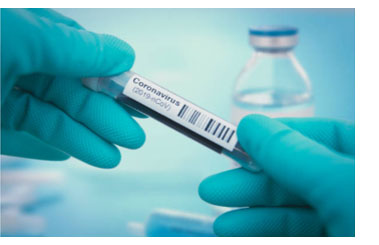 Much of the following was abstracted from an important article from Fisher Investments, Coronavirus: Seeing Through the Fog of Fear.
Much of the following was abstracted from an important article from Fisher Investments, Coronavirus: Seeing Through the Fog of Fear.
Coronaviruses are not new. They are a well-known class of cold viruses. Covid-19 is a new virus that is part of the coronavirus family. For decades, doctors have known how colds work. They cause cough and fever, runny noses, sneezing and make the patient feel tired and achy. For most, these viruses run their course without medications. For the elderly and sickly, they can trigger more severe illnesses like asthma or pneumonia.
Covid-19 is headline news in all the media 24/7. There’s much valuable information being posted in the media and shared on the Internet, and there’s also considerable misinformation, which is spawning fear and causing many people, and especially investors, to panic. While there are still many unknowns about the coronavirus, there’s much that is known about the outbreak.
As we write this article in late-March 2020, Johns Hopkins University dashboard cites that 263,071 coronavirus cases in the world have been confirmed, with 14,631 of these in the U.S. But this doesn’t reflect the number of patients who’ve recovered or died from the virus. Hopkins shows 97,351 patients having recovered with 11,113 deaths – 65 percent of these in China and Italy.
Many look at the 11,113 deaths as 4.2 percent of the 263,071 diagnosed, without considering that it doesn’t include the number of people who’ve recovered, or the number of people who have the virus but haven’t been diagnosed. Tom Frieden, former director of the CDC, says that the 4.2 percent rate “is certainly an overestimate” for those reasons.
Johns Hopkins’ Dr. Tom Inglesby reports that 80 percent of known cases were so mild that patients recovered with no hospitalization or medical intervention, and many others likely didn’t even know they had it.
Better testing is the key. Dr. Inglesby reports that in South Korea, where testing is more aggressive, the death rate is 1.1 percent. Dr. Frieden speculates that the overall death rate will be around 1 percent, which would put it higher than influenza (0.14 percent), but far lower than SARS and other similar outbreaks.
It’s widely known, at this point, that the elderly and those with pre-existing health conditions are at highest risk. This is also the case for influenza, according to Dr. Lisa Lockerd Maragakis at Johns Hopkins.
“RO” is the reproduction number, a measurement that epidemiologists use to indicate the number of people each patient is likely to infect. The World Health Organization (WHO) reports that the coronavirus has an RO of 2.8, which makes it more contagious than the seasonal flu (1.3) or Ebola (1.9), but much less contagious than smallpox (4.8) or measles (15.0). The New York Times reported that the coronavirus is far less contagious than chickenpox.
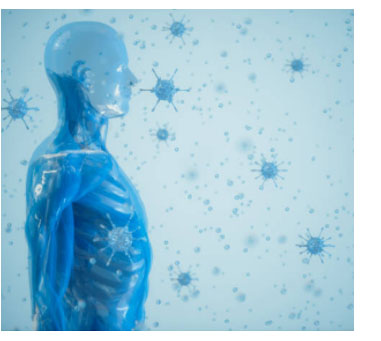 Can the Virus be Contained?
Can the Virus be Contained?
WHO Director-General Tedros Adhanom Ghebreyesus said, “We don’t even talk about containment for the seasonal flu – it’s just not possible. But it is possible for Covid-19.” One bright note: The WHO reports that “the coronavirus appears to be much less contagious than the flu in their respective incubation periods, i.e., before symptoms appear.”
More Deaths from the Flu
While the overall fatality rate of the seasonal flu is below that of the coronavirus, the WHO estimates that tens of millions of people worldwide contact influenza each year with 3 to 5 million severe cases and 250,000 – 500,000 deaths. In the U.S., the CDC reports that between 12,000 and 61,000 annual deaths have been attributed to influenza in past years.
The Hill published an article Jan. 27, 2020 titled, “Coronavirus is Spreading – But the Flu is a Greater Threat to Americans.” In addition to thousands of American seniors, the seasonal flu has killed 105 children in the U.S. so far this flu season.
Some Good News
Wikipedia provided the following chart, which focuses on coronavirus cases at the center of the crisis, China. The chart shows a sharp increase in patient recoveries with a corresponding decrease in patients under treatment. More important, it shows a dramatic drop in confirmed cases from the peak on Feb. 4, 2020. This is certainly good news, and perhaps will help to put the coronavirus in perspective.
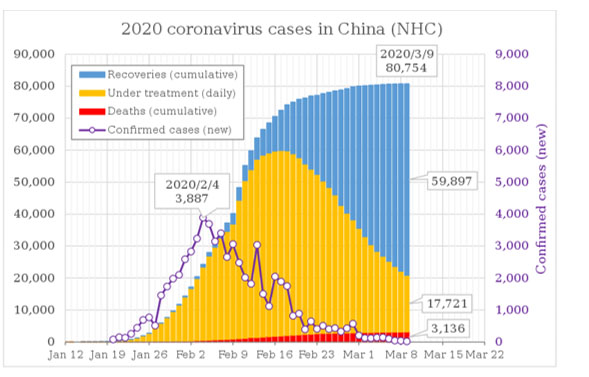
2020 coronavirus patients in China | Feb. 22, 2020 | Data Source: http://www.nhc.gov.cn/xcs/yqtb/list_gzbd.shtml
Author: Phoenix7777 | This file is licensed under the Creative Commons Attribution-Share Alike 4.0 International license.
Original source: https://commons.wikimedia.org/wiki/File:2020_coronavirus_patients_in_China.svg
Noted Pathologist’s Advice on Coronavirus Prevention
James Robb, M.D., one of the first molecular virologists in the world to work on coronaviruses, wrote a letter to his friends last month, giving them advice on how to prevent or slow the spread of this disease. The letter, which was not intended for mass distribution, made its way to the internet and has gone viral, no pun intended. We have verified its authenticity on snopes.com.
At the top of Dr. Robb’s list is to stop the practice of handshaking. Dr. Jon Wiener, dean of Allied Health at Asheville-Buncombe Technical Community College and former virologist at MD Anderson, couldn’t agree more. He’d like to see handshaking stop altogether.
In addition to stopping handshaking, other steps suggested by Dr. Robb include:
- Wash your hands often. You’ve heard it many times, but this is one of the most important things you can do to prevent coronavirus and other viruses.
- Wash your hands with soap for 20 seconds and/or use a greater than 60 percent alcohol-based hand sanitizer whenever you return home from ANY activity that involves locations where other people have been.
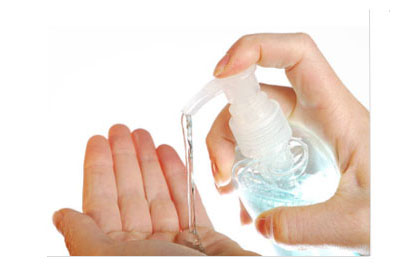 Keep a bottle of sanitizer available at each of your home’s entrances, AND in your car for use after getting gas or touching other potentially contaminated objects when you can’t immediately wash your hands. Hand sanitizer sold out at your local drug store? Make your own.
Keep a bottle of sanitizer available at each of your home’s entrances, AND in your car for use after getting gas or touching other potentially contaminated objects when you can’t immediately wash your hands. Hand sanitizer sold out at your local drug store? Make your own.- Open doors with your closed fist or hip. Don’t grasp the handle with your hand, unless there’s no other way to open the door. This is especially important on bathroom and post office or commercial doors. Many people use the restroom and don’t wash their hands; then they touch the door handle when leaving. “Why should you touch that door?” says Dr. Wiener.
- Use disinfectant wipes at stores when provided, including wiping the handle and child seat in grocery carts.
- If possible, cough or sneeze into a disposable tissue and discard. Cough into your elbow only if you have to. The clothing on your elbow will contain infectious viruses that can be passed on for up to a week or more!
His last suggestion seemed to get the most attention:
- Stock up on zinc lozenges, such as Cold-Eeze, and use several times a day when you begin to feel any “cold-like” symptoms beginning. These have been shown to be effective in blocking coronavirus and other viruses from multiplying in your throat and nasopharynx.
The people at Snopes reached out to Dr. Robb to ask if he did, in fact, author the above letter. He responded that he did, but it was never meant to be broadcasted beyond his family and close friends, and that he never intended for it to advertise any specific product.
On the subject of zinc, Dr. Robb said, “In my experience as a virologist and pathologist, zinc will inhibit the replication of many viruses, including coronaviruses. I expect COVID-19 (the disease caused by the novel coronavirus) will be inhibited similarly, but I have no direct experimental support for this claim. I must add, however, that using zinc lozenges as directed by the manufacturer is no guarantee against being infected by the virus, even if it inhibits the viral replication in the nasopharynx.”
What to Stock Up On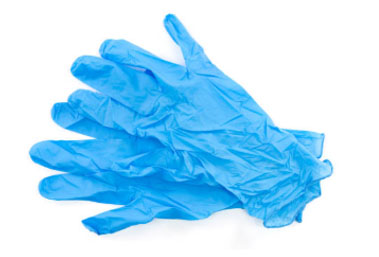
Later in his note to friends, Dr. Robb suggested that his friends might want to stock up on:
- Latex disposable gloves for use when shopping or using the gas pump;
- Hand sanitizers with at least 60 percent alcohol;
- Zinc lozenges could be used several times a day when symptoms appear, and he suggests that it’s best to lie down and let the lozenge dissolve in the back of your throat and nasopharynx.
And, although other health experts recommend against buying disposable surgical masks in order to allow caregivers to access the limited supply, Dr. Robb feels the advantage to using them is that it keeps you from transmitting the virus from your hand to your nose or mouth.
At the end of his note to friends and family, Dr. Robb said, “I hope these personal thoughts will be helpful during this potentially catastrophic pandemic. You are welcome to share this email.” It looks like they have . We encourage our readers to do the same with this newsletter.
Cholesterol Drugs Can Help Fight Prostate Cancer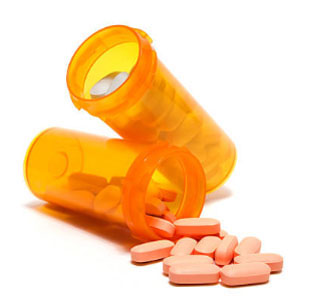
Cholesterol-lowering drugs, called statins, may help a patient’s survival if they have high-risk prostate cancer (Gleason 8 or higher), according to new research reported in the journal, Cancer Medicine.
Other research suggests that statin medications used in combination with another prescription medicine, Metformin (a diabetes medication), can also help prevent certain cancers. Researchers reported, “With respect to prostate mortality, Metformin plus statin was associated with a 36 percent reduction in risk of death followed by statins alone.”
The study, conducted at Jefferson Health in Philadelphia, followed 13,000 high-risk prostate cancer patients. Researchers found that those who were taking statin drugs alone, or with Metformin, had increased survival rates.
Additionally, the study found that not all statins provide the same cancer-reducing benefits. Atorvastatin, Pravastatin, and Rosuvastatin provided more benefits than another commonly prescribed statin, Lovastatin.
The study also found that men who were on hormonal therapy and were also taking Atorvastatin had longer times to prostate cancer progression than those who didn’t take statins.
Prostate cancer expert Dr. Elizabeth Kavaler from Lenox Hill Hospital in New York City, who was not involved in the study, agrees these research findings show promise. And testosterone may be the key, because higher cholesterol levels promote higher androgen levels, which, in turn, can stimulate prostate cancer growth.
Another prostate cancer expert, Dr. Manish Vira from the Arthur Smith Institute for Urology in New York, agrees that the findings are encouraging and noted that “a dozen actively recruiting clinical trials using either Metformin or a statin in prostate cancer treatment are already under way.”
VP Pence Visits Hampton
Last month, Vice President Mike Pence toured the Hampton University Proton Therapy Institute (HUPTI) with Secretary of Education Betsy DeVos. They met with HUPTI President, Dr. William R. Harvey, along with several students, administrators, and professors during a meaningful roundtable discussion. Pence also toured the facility and met with patients.
“It’s remarkable to think about the thousands of patients who have come in here, some of whom I met today, who have literally received lifesaving innovative proton treatment for cancer,” said Pence.
Staff at HUPTI was pleased that the vice president was able to tour the proton center, learn about the resources necessary to deliver proton therapy and understand the positive impact the treatment has on patients.
In response to the vice president’s visit, the Alliance for Proton Therapy Access (APTA) stated, “It’s important to let Republican leaders know that we appreciate Vice President Pence supporting this ‘lifesaving innovative treatment’ and his commitment ‘to hearing more about how we can be helpful and support not only the mission of Hampton University but specifically about the Proton Therapy Institute.’”
APTA, along with the National Association for Proton Therapy (NAPT), are asking proton advocates to share this story on social media and through emails to Republican leaders. They suggest keeping Facebook and Twitter posts patient-focused, simple and positive. They also suggest contacting the White House with messages of appreciation for Pence’s visit to a proton center and recognizing the value of proton therapy.
“Overdiagnosis” in About 20 Percent of Common Cancers
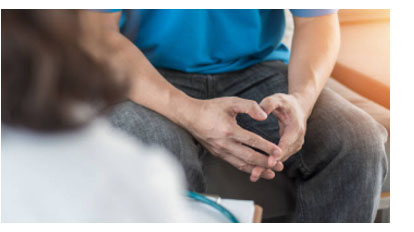 An Australian study found about 20 percent of five common cancers is the result of “overdiagnosis.” Overdiagnosis is defined as the diagnosis of cancer in people who would never have experienced symptoms or harm had the cancer remained undetected and untreated.
An Australian study found about 20 percent of five common cancers is the result of “overdiagnosis.” Overdiagnosis is defined as the diagnosis of cancer in people who would never have experienced symptoms or harm had the cancer remained undetected and untreated.
Researchers analyzed over 30 years of national healthcare data – figures were 18 percent for women and 24 percent for men. Although the concept of overdiagnosis has been reported before, this study offers a new perspective: It’s “the first time that the risk of overdiagnosis has been quantified across five cancers anywhere in the world,” said one of the study’s authors, Paul P. Glasziou, PhD.
The five cancers studied were breast, thyroid, renal, melanoma, and prostate. Of the 24 percent overdiagnosed cancers in men, 42 percent of this number were prostate cancer.
The reasons for overdiagnosis differ by cancer type, with prostate cancer attributable to “opportunistic but extensive” screening.
The take-away from this study is that while it’s important that cancer is properly detected, it’s equally important that doctors and patients understand that not all cancers need to be treated.
Is SpaceOAR Hydrogel Worth the Cost?
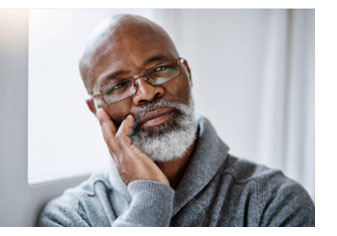 A recent study examined the cost effectiveness of prostate cancer radiotherapy with and without the use of a hydrogel spacer.
A recent study examined the cost effectiveness of prostate cancer radiotherapy with and without the use of a hydrogel spacer.
SpaceOAR hydrogel is a polyether compound that’s injected between the rectum and the prostate prior to external beam radiation therapy. Its purpose is to increase the space between the two organs to minimize radiation exposure to the rectum.
Researchers found that the hydrogel spacer reduced gastrointestinal, genitourinary, and sexual function complications, concluding that SpaceOAR placement is valuable and cost effective.

Wow! Thank you, members!
We got some tremendous feedback after last month’s BOB Tales was issued. We often receive positive feedback, but for some reason last month topped the charts. Could it have been the family photo Deb included in the memo? Many told us they enjoyed that “personal touch,” telling us it helped them relate more to our life and family. That prompted us to include another photo in this month’s memo. Thanks, members – your feedback matters!
BOB Tales Onward!
We also learned that many of you are forwarding our newsletter to dozens of others – some to hundreds of others. We are copied on many of these forwards and again, last month, more so than ever before. Below are a few messages our members included in their forwarded emails to family and friends. We are truly grateful for this spread of valuable information!
Gents, please see this newsletter regarding prostate cancer. I was shocked to learn that one in four men, who’ve already had a prostatectomy or radiation, have a recurrence. I dealt with my recurrence three months ago with proton therapy. So, you never know if you’re completely out of the woods. The BOB Tales newsletter has lots of good information and resources. Please forward to others if you feel it would be relevant to them.
Family and friends: Please take a look at the attached newsletter from Proton BOB. Most of you have heard me rave about my proton therapy treatment and denounce surgery. I promise I’m not making this stuff up! There’s a new study that found surgery patients have persistently worse side effects compared to other treatment methods. Please read the full story in the news section.
Also in the newsletter, you’ll find some general health tips. This month there’s an important topic – Coronavirus. I encourage you all to be vigilant about hand washing and make sure to avoid touching your face and do your best to avoid people who are coughing and sneezing. Most important, please pass this information along to your kids (especially my grandchildren!). It’s important they are reminded daily about hygiene.
Here’s another BOB newsletter – interesting clinical trial happening. For those of you who are considering proton therapy – or if you know anyone recently diagnosed with prostate cancer, be sure to read about the COMPPARE trial under “Events.”
Opposing the CMS Proposed Rule
We’re still urging all our readers to submit comments/letters/emails to your representatives in Congress expressing your opposition to the proposed Center for Medicare and Medicaid Services (CMS) rule that would cut reimbursement for proton therapy by nearly 50 percent. In response to last month’s request in our opening memo, we received dozens of emails from members, so we know our repeated requests are being heard. THANK YOU to those who’ve submitted their personal stories and feelings in support of proton therapy. Below are a few excerpts from the messages we received.
Note: If you haven’t already, please submit an email, write a tweet, or make a call via this form on the Alliance for Proton Therapy website. If you need a boilerplate letter template, you can find one here.
Deb, I plan to submit my letter today. Thank you for the reminder. Note that my proton treatment was in 2012. The same week I started at Loma Linda, a fishing friend decided to go with surgery, the “gold standard.” We fish together quite often, and he has to urinate 5-7 times to my one. Also, my neighbor who knew I had proton therapy also had surgery. He was treated about five months ago and is having complications. Friends told me they told him to call me before making a treatment decision. I never received a call.
I sent my letters to Congress. Thanks for the multiple reminders. These days I need reminders to go to the bathroom, so your consistency is appreciated. My proton treatment was nearly 15 years ago, and I doubt I’d be alive, never mind upright and active, had I gone another route. I’m indebted to proton therapy for my good life and it means a lot to me that others, possibly my family and friends, have access to proton therapy in the future. Let me know what else I can do to help the cause!
I’m concerned about this potential change to Medicare’s policy. I want future generations to be able to receive proton therapy should they need it. I’m glad there are folks like you who actively advocate for such an extraordinary technology. I feel fortunate to have had my treatment paid for by Medicare. Others should have the same benefit. Please note my PSA is undetectable and I feel fantastic!
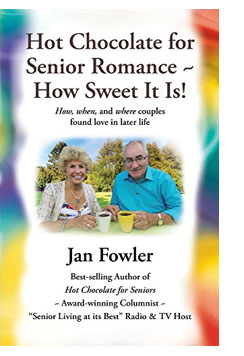 How did you meet your Valentine?
How did you meet your Valentine?
Jan Fowler is an award-winning columnist and author of four books. She also happens to be the wife of one of our members, David Weir. This past Valentine’s Day, Jan submitted a segment from her book, Hot Chocolate for Senior Romance – How Sweet It Is, to the Redlands Community News. The story, which was actually written by David, is following:
‘The Lady of My Dreams’
My personal sojourn to Loma Linda, CA, began in late January 2008, following a treacherous two-day drive over snowy mountain roads from my home in Denver. Like many other men diagnosed with early-stage prostate cancer, I had little knowledge or concern about this issue until an elevated PSA test, followed by a confirmation biopsy, captured my attention faster than one of Superman’s speeding bullets.
Typical of what others may have experienced, I was offered the options of surgery, external beam radiation and internal radiation “seeding” as viable courses of treatment, with no mention of possible nasty side-effects that might impair continence or sexual potency.
While pondering what, if anything, I should do about my situation, I ran across the annual “Medicine and Hospital” issue of U.S. News & World Report while passing through an airport during the fall of 2007. In it was a full-page ad describing the proton radiation program at Loma Linda University Cancer Center, with a toll-free number to call.
Whether this ad caught my eye by coincidence or Divine intervention is hard to say, but I couldn’t wait to get back to Denver to check things out. In addition to receiving a timely orientation packet and video from LLUCC, I was quickly put in touch with prostate cancer survivor Bob Marckini and his book, You Can Beat Prostate Cancer: And You Don’t Need Surgery to Do It.
After reading the book and speaking with Bob on the phone, I instinctively knew that this was the best way for me to go. And so today, I count myself as one of the lucky alumni of the LLUCC proton radiation program. I was not only healed from cancer with no nasty side effects, I also experienced the very best of LLUCC’s motto and philosophy – to “heal the whole person.”
And now, as Paul Harvey was famous for saying, for the rest of the story… Unlike most of the other men going through the 90-day treatment program at LLUCC with their wives in residence with them, I came alone as a newly minted Medicare-age single.
Yes, I admit I was open to meeting other singles in the area, but had no expectation of actually doing so as golf, swimming, table tennis, serving as a volunteer pianist in the hospital lobby, plus various support group activities, were readily available.
Then everything changed in a “New York minute” when I attended a free ballroom dancing lesson, taught by Reuben at the Loma Linda Senior Center, in early February. I met a lovely lady by the name of Jan Fowler. Jan just happened to be at this senior center in connection with a television segment she was hosting from a nearby cable station in San Bernardino; the segment was for her show, “Jan Fowler Presents: Senior Moments.” It didn’t take long before Jan and I became both dancing and romantic partners – in the midst of my “radiation vacation” and beyond. Forget about winning the lottery; I’d just discovered the lady of my dreams! Whether our meeting was just coincidence or, again, Divine intervention, I sometimes wonder, but I can say for sure that it was another life-changing event for me during my journey of healing in Loma Linda.
So in more than one way, I feel I’ve been blessed by my whole experience. And yes, in case you’re wondering, after many wonderful loving years together, Jan and I are still waltzing in the direction of our dreams! Carpe diem!

We’ve been producing BOB Tales newsletters for nearly 20 years. During this time there have been important articles that many new members haven’t seen, and some older members may have forgotten. So, we decided to periodically re-run some articles from past newsletters. This one is from November 2005.
 Pomegranate Juice May Help Prevent Prostate Cancer
Pomegranate Juice May Help Prevent Prostate Cancer
As reported in previous BOB Tales newsletters, there’s been a lot of evidence of late that the ancient pomegranate fruit might help prevent
prostate cancer or a recurrence of prostate cancer. Researchers at the University of Wisconsin Medical School say that the juice of
the pomegranate shows “major promise” in this arena. Earlier research at Wisconsin and elsewhere has shown that the pomegranate, a fruit native to the Middle East, “is rich in antioxidant and anti-inflammatory activity and is effective against tumors in mouse skin. In fact, pomegranate juice has higher antioxidant activity than red wine and green tea, both of which appear promising as anti-cancer agents.”
Research focused on preventing prostate cancer and preventing the disease from progressing or recurring. All research to date was done on human prostate cancer cells placed in mice. The results, which compare with humans consuming an 8-ounce glass per day were “dramatic” according to reports. “Our study – while early – adds to growing evidence that pomegranates contain very powerful agents against cancer, particularly prostate cancer,” says lead author Dr. Hasan Mukhtar, professor of dermatology in the UW Medical School. “There is good reason to test this fruit in humans – both for cancer prevention and for treatment.” This most recent study was funded by the National Institutes of Health. Other studies have been published in Proceedings of the National Academy of Sciences.
Bob’s comment: “I’m convinced. I’ve added pomegranate juice to my daily diet.”

Nearly Half of Americans Are Obese
According to new data from The Centers for Disease Control and Prevention (CDC), more than 40 percent of US adults are considered obese and one in 10 are “severely overweight.” The 2017-18 health survey released last month, found the US obesity rate to be 42 percent and the severe obesity rate to be more than 9 percent.
Adult obesity rates are increasing. Fifty years ago, about 1 in 100 people in the US was severely obese. Today, severe obesity is 10 times more common. George Washington University obesity expert, Dr. William Dietz, believes this will result in more Americans being diagnosed with diabetes, heart disease, and cancer. He blames the government for not enforcing more measures to encourage physical activity.
Obesity is measured by the body mass index, or BMI, a figure calculated from a person’s weight and height. A BMI of 25 or greater is considered overweight; a BMI of 30 and above is obese; and a BMI of 40 or above is severely obese.
According to the National Institute of Diabetes and Digestive and Kidney Diseases, obesity health risks include Type 2 diabetes, high blood pressure, heart disease, stroke, sleep apnea, metabolic syndrome, fatty liver diseases, osteoarthritis, gallbladder diseases, kidney disease, pregnancy problems, and some cancers.
There’s no simple solution to the obesity epidemic. The CDC website suggests policy makers, state and local organizations, business and community leaders, school, childcare and healthcare professionals, and individuals must work together to create an environment that supports a healthful lifestyle and there are several ways to do so.
New Study Links Dairy Milk to Breast Cancer
Intake of dairy milk is associated with a greater risk of breast cancer in women, according to a new study from Loma Linda University Health and published in the International Journal of Epidemiology. According to researchers, even relatively moderate amounts of dairy milk consumption can increase women’s risk of breast cancer – up to 80 percent depending on the amount consumed.
The study’s first author, Gary E. Fraser, MBChB, PhD, said the observational study gives “fairly strong evidence that either dairy milk or some other factor closely related to drinking dairy milk is a cause of breast cancer in women.”
“Consuming as little as 1/4 to 1/3 cup of dairy milk per day was associated with a 30 percent increased risk of breast cancer,” Fraser said. “By drinking up to one cup per day, the associated risk went up to 50 percent, and for those drinking two to three cups per day, the risk increased further 70 to 80 percent.”
Current U.S. Dietary guidelines recommend three cups of milk per day. “Evidence from this study suggests that people should view that recommendation with caution,” Fraser said.
Researchers observed the dietary intakes of nearly 53,000 women for nearly eight years, all of whom were initially cancer free. By the end of the study, 1,057 women were diagnosed with breast cancer, or about 2 percent of the total women who participated in the study. No clear associations were found between soy products and breast cancer, independent of dairy.
Fraser said the associations between breast cancer and dairy milk could be the result of the sex hormone content of dairy milk, as cows are lactating and about 75 percent of the dairy herd are pregnant. He went on to say that dairy milk does have some positive nutritional qualities, but they need to be balanced against possible negative effects.
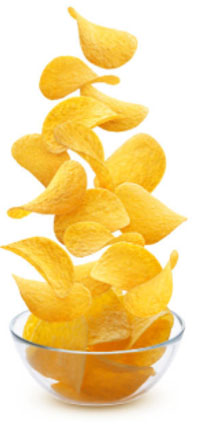 A Western-style Diet Can Impair Brain Function
A Western-style Diet Can Impair Brain Function
Consuming a Western diet for as little as one week can subtly impair brain function, according to a new study published in the journal, Royal Society Open Science. Scientists also say the diet encourages people to overeat.
A Western (American) diet is characterized by a high consumption of red and processed meats, high-fat dairy products, pre-packaged foods, butter, fried foods, refined grains, eggs, potatoes, corn (high-fructose corn syrup) and high-sugar drinks and desserts. A Western diet is also characterized by a minimal intake of fruits, vegetables, fish, legumes, and whole grains.
Researchers found that after seven days on a high-fat, high-sugar diet, fit and healthy men and women in their 20s scored worse on memory tests and found junk food more desirable immediately after they’d finished a meal. The finding suggests that consuming these types of foods makes it difficult for people to regulate their appetite, and that damage to the hippocampus – the region of the brain that’s associated primarily with memory and appetite control – may be the reason.
A previous study on animals found that junk food impairs the hippocampus. It’s unclear why, but one thought is that a normally functioning hippocampus inhibits future eating behavior by blocking or weakening memories of the preceding meal. When the hippocampus functions less efficiently, memories of the food you just ate are heightened, and you tend to desire more of it.
Researchers believe that in time governments may come under pressure to impose restrictions on processed food, as they did with cigarette smoking.

National Proton Conference 2020: Canceled
The eighth annual National Proton Conference, which was scheduled for April 26-29, 2020 at the Renaissance Hotel in Nashville, TN, has been canceled due to the coronavirus outbreak. We received a message from NAPT Executive Director Jennifer Maggiore on March 12. An excerpt from her message is below.
NAPT has been closely following the COVID-19 pandemic, including guidance from various public health officials, and communicating with key stakeholders, our conference committee and event management team. Although disappointing, we have decided that we will not proceed with our National Proton Conference in Nashville. This decision was not made lightly and included consideration for our attendees, speakers, and sponsors.
NAPT is considering sharing with attendees some of the planned conference content virtually. If this happens, we’ll include a recap in an upcoming BOB Tales.

What is an Endowed Chair?
What is a “Chair?” Chair is the term used to describe an endowment that provides a steady stream of income to fund the work of research scientists. Loma Linda University Cancer Center doesn’t receive enough revenue from patient care to fund research. Life-saving research is dependent upon the generosity of individuals. With funded chairs, the organization can attract and retain some of the best researchers. In addition, scientists can dedicate all their time to research. Without endowment earnings, they could spend a third of their time trying to raise money through grants. A minimum of $2.5 million is needed to fund a chair to support one researcher.
An endowed chair is a distinction awarded by an institution, usually to an individual,
in recognition of past and potential contributions to the institution’s mission. In addition to the academic honor given to the individual, an endowed chair provides funding for specific programs, and is supported by payout from interest earned on the principle collected. So, the money raised for an endowed chair is always protected. The interest earned from the endowment is used to fund research. This interest is typically around 4 percent.
In Bob Marckini’s new book he wrote about the three-part mission of the Brotherhood of the Balloon:
- To provide aftercare support, communications and education to members;
- To help others discover proton therapy by promoting it within our communities and beyond, and;
- To give back by encouraging financial contributions to proton therapy research.
On mission objective No. 3, Bob wrote on page 169: “In June 2013, I was greatly honored to be invited to a Loma Linda University Health board meeting where BOB member Chuck Kubicki, a real estate developer from Cincinnati and now a close friend, announced the establishment of the Robert J. Marckini Endowed Chair for Proton Research. Mr. Kubicki “seeded” the new chair with a generous contribution.”
The current level of funding for the chair is approximately $3 million. BOB members have raised about $13 million in total (gifts and planned giving) for various philanthropic efforts at LLUH. Almost 40 percent of our members have contributed. We are enormously proud and grateful for this.
We all have our favorite charities. And so many are worthy of our consideration. We at the BOB hope that you consider supporting the endowed chair named in honor of Bob Marckini. So, if you’d like to say “thank you” to LLUH for their pioneering work in proton therapy – whether or not you were treated at LLUCC – or the Brotherhood of the Balloon for our efforts in supporting proton therapy research and educating others on the benefits of proton therapy, please make a gift to the Marckini Chair.
As Winston Churchill said, “We make a living by what we get; we make a life by what we give.”
Give to Proton Therapy Research
- Donate online.
- Write a check to LLUCC Proton (Put “Marckini Chair” on the memo line) and mail it to LLUH, Office of Philanthropy, P.O. Box 2000, Loma Linda, CA 92354.
- Call Regina Joseph at 909-558-5010.
Give to Vision 2020
- Donate online.
- Write a check to LLUH Vision 2020 and mail it to LLUH, Office of Philanthropy, P.O. Box 2000, Loma Linda, CA 92354.
- Call 909-651-2020.

The Second Edition: It’s Here!
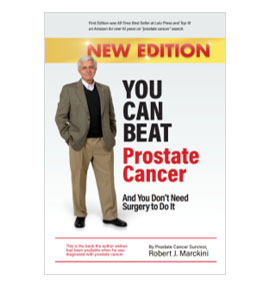
As we mentioned last month, Bob has finished the second edition of his book. It’s an update of virtually all the important prostate cancer-related changes that have taken place in the 14 years since his first book was published. This includes significant changes in diagnostic technology – including a major development in prostate biopsies, the “great PSA controversy,” the major treatment options, proton therapy technology developments, clinical trials comparing proton to IMRT, diet and lifestyle, insurance coverage, the 10 steps for taking control of your prostate cancer diagnosis and treatment, and much more. The new book is 130 pages longer than the first book and is packed with important information for newly diagnosed patients and their loved ones.
Endorsements
We are deeply honored to have received endorsements for this book from preeminent medical professionals from around the world. The following is from Dr. Richard Hart, MD, DrPH, President, Loma Linda University Health:
It has been my privilege to call Bob Marckini a friend for several years. There
are few lives more focused on helping others, particularly with prostate cancer, than Bob. But his message goes far beyond a cancer diagnosis and treatment options to a complete change in lifestyle and a new direction for each individual, from a state of fear to a journey of peace and gratitude. For two decades he has relentlessly pursued this vision of sharing information and understanding with many, through his best-selling book as well as endless phone calls, attendance at numerous meetings, and a monthly newsletter. There can be no question that Bob has altered the trajectory of countless lives, men and women, with this message of wholeness and health. It has been a privilege for Loma Linda University Health to partner with Bob on this journey of restoration.
Where to Buy
The new edition is available on the publisher, Lulu Press’s website. Type “Marckini” or “You Can Beat Prostate Cancer” in the search box and select the book with the gold banner at the top (the older edition is still available).
Just last week the book went up on Amazon, though there are a few glitches that should be worked out in the coming days. It will soon be available on the Barnes & Noble website as well. Note: Both old and new versions of the book will be listed for a while, so be sure to select the version with the gold banner at the top.
Note: If we remove the original book, we lose more than 400 mostly 5-star reader reviews. Amazon doesn’t permit retaining reader reviews for new editions.
Reader Reviews
Since the new book has been on Amazon for only a few days, there are no reader reviews. Positive reviews will help propel the book to the top of Amazon search lists where newly diagnosed patients can find it. So, if you’ve read Bob’s new edition and liked it, please go to Amazon and write a brief review, rating it from one to five stars. You’ll help others discover this landmark book!
Pricing
The printer/publisher has raised prices on us three times since we published the first the book. Also, the new edition is 50 percent longer than the first, so there’s a retail price increase to cover the additional costs.
More Options
We are working on an audio version that will be recorded by Bob Marckini. A Kindle version will also soon be available on Amazon and Barnes & Noble.
As we have in the past, we’ll discount books in quantity (20 or more). Send an email to [email protected]. Proceeds from book sales are used to help fund our efforts and to support proton therapy research.

Useless Facts
- The word “school” comes from the ancient Greek for “free time.”
- In England, the Speaker of the House is not allowed to speak.
- The name for Oz in the “Wizard of Oz” was thought up when the creator, Frank Baum, looked at his filing cabinet and saw A-N, and O-Z, hence “Oz.”
- The microwave was invented after a researcher walked by a radar tube and a chocolate bar melted in his pocket.
- The average person falls asleep in seven minutes.
- There are 336 dimples on a regulation golf ball.
Remembering Issur Danielovitch Demsky … ?
Who is Issur Danielovitch Demsky you ask? It’s Kirk Douglas! Douglas, a Hollywood legend, died Feb. 5 at 103. He was a World War II veteran and an iconic actor whose career spanned seven decades.
Douglas isn’t the only famous person who lived by another name. See if you can pair the following two columns from an article that appeared in the March 1, 2020 issue of Parade Magazine:

The answers to the above Name Match appear after the brain teaser below.

Last Month’s Brain Teaser
Break the Code (from the Saturday Evening Post): The statement below has been encoded using a simple substitution cipher. Each letter has been replaced with a different one, and the substitutions remain constant throughout. Can you decode it? Hint TEV is WAS.
TCDG P TEV KZRTPGK IF, P EATEOV TEGLDS LR MD VRNDRGD. GRT P ZDEAPXD P VCRIAS CEHD MDDG NRZD VFDBPQPB
Bob says this one took him about 15 minutes to solve. Can you beat Bob’s time?
Answer: WHEN I WAS GROWING UP, I ALWAYS WANTED TO BE SOMEONE. NOW I REALIZE I SHOULD HAVE BEEN MORE SPECIFIC. – By Lily Tomlin
Winner: The winner, a BOB member from New Jersey, who was treated at the Procure Proton Therapy Center in Somerset, prefers to remain anonymous. Note in a message to us, he said: “It was Bob’s book that cemented my decision about treatment. After reading it, I didn’t seriously consider any other options.”
New Brain Teaser
Which of the following words don’t belong in the group and why?
CORSET, COSTER, SECTOR, ESCORT, COURTS
Send your answer to [email protected] for a chance to win a signed copy of Bob Marckini’s NEW second edition book, You Can Beat Prostate Cancer.
Answers to Name Match above: 1-F, 2-G, 3-A, 4-D, 5-C, 6-H, 7-J, 8-I, 9-K, 10-B, 11-E
As We Get Older
- My ability to remember song lyrics from the 80s far exceeds my ability to remember why I walked into the kitchen.
- As I watched the dog chasing his tail, I thought: Dogs are easily amused. Then I realized I was watching the dog chase his tail.
- First rule of cleaning while listening to music: The toilet brush should never be the microphone.
- Sometimes, I shock myself with the smart stuff I say and do. Other times, I try to get out of the car with my seat belt on.
- Does refusing to go to the gym count as resistance training?
- I set out to lose 10 pounds this month … only 15 to go!
- The main function of your little toe is to make sure all the furniture in the house is in place.
I’m So Old …
- I’ve dialed a rotary phone (and it didn’t have an answering machine).
- I’ve recorded a song off a transistor radio onto a tape recorder.
- I’ve watched a black and white TV (with fewer than 10 channels) that had foil on the rabbit ears antenna.
- I’ve taken a long walk without counting my steps.
- I’ve eaten food that I didn’t take pictures of.
Quote of the Month:
“Treasure your relationships, not your possessions.” – Anthony J. D’Angelo

Petrol Pump Wisdom Source
Can you imagine wanting to make sure you drove by a certain gas station every day? There’s a gas station in Gauteng, South Africa with a chalkboard out front. Each day the owner posts a daily uplifting quotation for passers-by. And hundreds of motorists reportedly divert their driving route each week to check out the latest #PetrolPumpWisdom quotation on the chalkboard. They claim it brightens their day, and we can see why. Here are a few recent quotations:
“Don’t do something permanently stupid because you’re temporarily upset.”
“It’s better to walk alone, than with a crowd going in the wrong direction.”
“Be who you needed when you were younger.”
“When you forgive, you heal. When you let go, you grow.”
“Forgiveness does not change the past, but it does enlarge the future.”
“In a world where you can be anything, be kind.”
“When you make a commitment, you build hope. When you keep it, you build trust.”
“The best time to plant a tree was 20 years ago. The second-best time is now.”
“Why do we only rest in peace? Why don’t we live in peace too?”
“May your choices reflect your hopes, not your fears.” – Nelson Mandela
The lady behind this wonderful idea is Alison Billet from Hutton Hyde Park. She said that she inherited the chalkboard from the previous gas station owner 20 years ago. “We continued the tradition he started, and it has become a landmark. We’re now on social media.”
Photos of the chalkboard have appeared many times in newspapers and magazines and have been spoken about on radio stations all over the world. The “rest in peace” quotation has been shared over a quarter of a million times around the world.
Low PSAs to all,
Bob Marckini and Deb Hickey
To print the BOB Tales newsletter or view the newsletter with a larger font size, click here for the PDF file.
NO MEDICAL ADVICE: Material appearing here represents opinions offered by non-medically-trained laypersons. Comments shown here should NEVER be interpreted as specific medical advice and must be used only as background information when consulting with a qualified medical professional.

